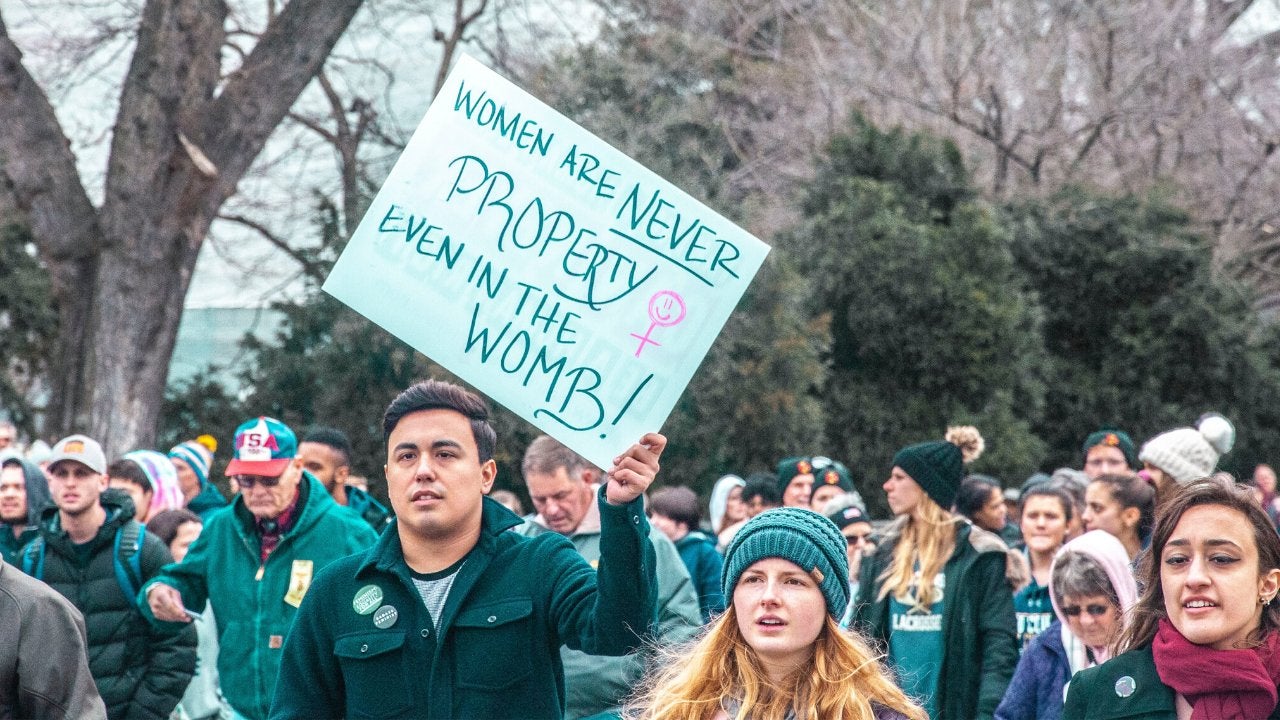Content warning: abortion, rape, miscarriage
One of the most controversial and polarizing political topics today is abortion — and whether or not it is unconstitutional for the government to have control over a woman’s healthcare. On September 1st, 2021, one of the most restrictive abortion bans in the country came into effect in Texas. Texas Senate Bill 8 bans abortions after six weeks of pregnancy, before most women even know that they are pregnant, and it makes no exceptions for rape or incest. What is unique about the bill is that it allows private citizens to sue abortion providers — and the citizens don’t need to show any connection between themselves and those they are suing.
History of Abortion
The practice of abortion has been known since ancient times. Although the methods have changed to become safer and more effective since the first written mention of abortion in 1075 BCE, the wish to terminate unwanted pregnancies has followed women since the beginning of times.
In fact, abortion was an incredibly common practice throughout the 19th century. In the 1840s and 50s, ads for “period-inducing pills” would be published in the local newspaper and wouldn’t raise any eyebrows. Pregnancy was incredibly dangerous and, despite premarital sex being quite common, the consequences for unwed women giving birth were severe. Oftentimes, abortion was a social necessity. In fact, it was estimated that one in every five women of the time had had an abortion.
The practice was only criminalized in the U.S. at the end of the 19th century after a campaign led by the American Medical Association. They wanted citizens to turn to the newly-educated professional male doctors and physicians for medical care rather than the midwives and “female doctors” that many women relied on for abortions. It was a business tactic that advocated that a woman’s biological role was to be a wife and a mother and that abortion undermined this role.
It worked, causing the Comstock Laws of 1873 to ban the publication and spread of information about birth control. Anti-abortion laws followed quickly after. However, even after the criminalization of abortions by the end of the 19th century, Americans did not simply stop getting them. Instead, the practice of abortion went underground, often making it a very risky and unsanitary medical procedure that could not legally be performed by licensed doctors. However, women were desperate and willing to do whatever they had to do, even if it meant risking their own life.
It wasn’t for another one hundred years, in 1973, that the famous Supreme Court ruling in Roe v. Wade made abortions legal in America. In the case, “Jane Roe” filed a lawsuit against Henry Wade, the District Attorney of Dallas County. She challenged a Texas law that made abortion illegal, saying that the state laws were too vague and that they violated her right to personal privacy (which is protected by five different amendments to the Constitution). The Supreme Court sided with Jane, citing the Due Process Clause of the fourteenth amendment, which protects the right of privacy from state action. A woman’s right to choose falls within that right of privacy.
The Texas Abortion Ban
Now, here we are, almost fifty years later, and still talking about abortion laws in Texas.
What makes this Texas Abortion Ban different from any abortion law passed before it is that it does not rely on public officials to enforce the law. Instead, this law allows individuals to bring civil lawsuits against abortion providers or anybody else who is “aiding or abetting” illegal abortions. Anybody who can successfully sue can be awarded at least $10,000.
The problem with this is clear: it places a bounty on doctors, Uber drivers, and anyone who could be considered to be “aiding” in the provision of abortions. Under this ban, the friend of a rapist could sue an Uber driver for taking the victim to get an abortion procedure. Even worse, the Uber driver could face more of a punishment than the rapist did for inflicting the unwanted pregnancy — and the rapist could walk away from the situation $10,000 richer.
Although the rapist themself can’t sue, someone close to them can absolutely sue over an abortion provided to a survivor of rape. Similarly, someone who suffered a miscarriage could be brought to court for having the necessary medical procedure performed after finding out that they lost the baby. Miscarriages are common up until about the twelfth week of pregnancy, meaning it’s very likely that a woman could miscarry after the six weeks allowed for an abortion procedure in Texas.
Someone who already faced a tragic, life-changing loss of a pregnancy could be forced to act as a witness and dig up all of their past trauma in an attempt to prove that the baby truly was dead when the procedure occurred. And at the end of the trial, if the plaintiff won they would be reimbursed all legal expenses as well as earn at least $10,000. If the defendant won, they would be reimbursed no legal expenses and would instead absorb the cost accrued by lawyers and time off work to come to trial (and there’s no $10,000 reward for the defense winning).
Since the ban was passed, controversy has surrounded it. Some support the bill, saying that it is not an attack on women but on those who profit off of abortions. According to the law, patients can’t be sued, but their doctor(s), friends or family who help to pay for the procedure, and driver(s) can be. However, critics of the bill firmly disagree. According to President Joe Biden, the $10,000 “bounty” for successful lawsuits clearly encourages plaintiffs to sue regardless of their involvement in the situation.
A nosy neighbor looking for a quick buck could be awarded thousands for suing their neighbor’s doctor for performing the procedure. The plaintiff also has four years to sue, meaning that an angry ex or friend-turned-enemy could decide to sue a woman’s driver or family for an abortion that occurred three and a half years prior. Even worse, an abusive ex could profit by suing their ex’s doctor or family, inserting themself back into their ex’s life all the while.
What Now?
The Supreme Court refused to block the Texas law less than twenty-four hours after it took effect. The vote was 5 to 4 in the right-leaning court and struck fear into the hearts of pro-choice advocates about the likelihood of Roe v. Wade possibly being overturned this fall. The majority opinion consisted of a single paragraph while all four dissenting justices, including Republican Chief Justice John G. Roberts Jr., filed opinions.
Justice Sonia Sotomayor’s dissent read, “The court’s order is stunning. Presented with an application to enjoin a flagrantly unconstitutional law engineered to prohibit women from exercising their constitutional rights and evade judicial scrutiny, a majority of justices have opted to bury their heads in the sand…The court should not be so content to ignore its constitutional obligations to protect not only the rights of women, but also the sanctity of its precedents and of the rule of law.” Despite typically voting in favor of more conservative laws, Chief John Roberts also said that he would have blocked the law, writing that “The statutory scheme before the court is not only unusual, but unprecedented.” Justice Elena Kagan, another dissenting voice, criticized the court for its “rushed” decision without full briefing or oral argument.
In the coming months, all eyes will be on Texas as Americans watch how this latest abortion ban will pan out. Surely, other anti-abortion states will quickly follow suit, and the way the Supreme Court deals with these laws could have hefty implications for the likelihood of Roe v. Wade being overturned in the near future. The question still remains: is the Texas Abortion Ban constitutional? And what does it mean for the future of healthcare and women’s rights?
Works Cited:
Astudillo, C., & Douglas, E. (2021, September 10). We annotated Texas’ near-total abortion BAN. Here’s what the law says about enforcement. The Texas Tribune. Retrieved September 21, 2021, from https://www.texastribune.org/2021/09/10/texas-abortion-law-ban-enforcement/.
Blakemore, E. (2018, January 22). The criminalization of Abortion began as a business tactic. History.com. Retrieved September 21, 2021, from https://www.history.com/news/the-criminalization-of-abortion-began-as-a-business-tactic.
Liptak, A., Goodman, J. D., & Tavernise, S. (2021, September 1). Supreme court, Breaking Silence, won’t Block Texas abortion law. The New York Times. Retrieved September 21, 2021, from https://www.nytimes.com/2021/09/01/us/supreme-court-texas-abortion.html.
McCammon, S. (2021, September 1). What the Texas Abortion ban does – and what it means for other states. NPR. Retrieved September 21, 2021, from https://www.npr.org/2021/09/01/1033202132/texas-abortion-ban-what-happens-next.
Roe v. Wade. Oyez. (n.d.). Retrieved September 21, 2021, from https://www.oyez.org/cases/1971/70-18.





